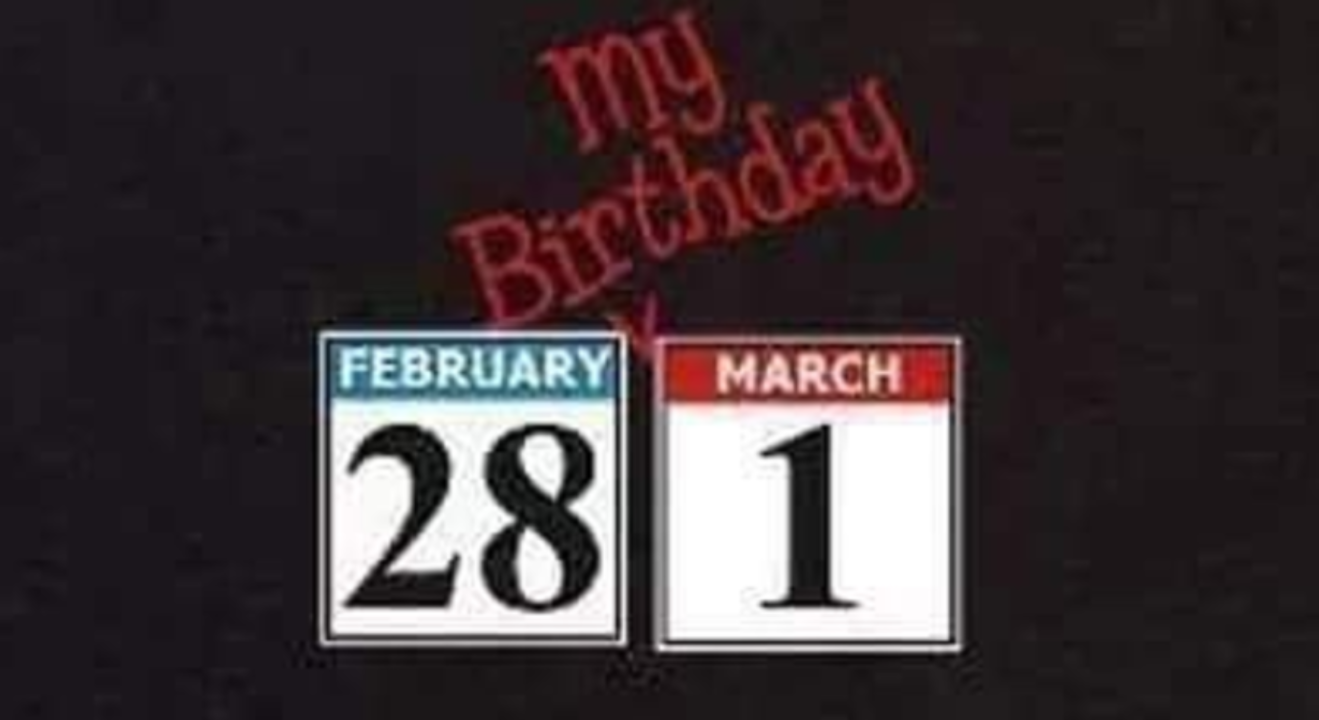Culture July 24, 2017
Get ready for your mind to be blown.


Every four years, Leap Day is added to February to keep our calendar in line with the solar year. It also keeps the seasons stable and makes the future easier to predict for scientists.
In addition, Leap Day serves the cultural purpose of keeping up with holiday traditions. Without Leap Day, after 750 years, winter would be in June, making for a very strange Christmas.
Leap Day makes up for lost time. In a traditional year, there are 365 days, five hours, 48 minutes and 46 seconds, which roughly translates to 365.25 days.
Because it would be pretty awkward to celebrate New Year’s five hours into the day, we discount the extra quarter of the day each year. However, that time doesn’t disappear, so to make up for it, we add a day every four years, making the calendar year 366 days in a leap year.
Leap Day dates all the way back to the time of Julius Caesar. Caesar played with the concept of adding a leap month based off a 364-day year. However, after consulting top astronomers at the time, he realized the number of days was closer to 365.25 days.
Originally, he added Leap Day on Feb. 24 in 45 B.C.
Despite getting closer to the number of days in a year with the help of his advisors, Caesar still miscalculated by 11 minutes.
To make up for this disparity, Pope Gregory XIII created a system that subtracts three leap years every 400 years. Leap years occur on century years like 2000, that are divisible by 400. However, they do not occur on century years like 1700, that are not.
1. Leap Day is typically celebrated on February 29. Some countries don’t follow the Gregorian calendar model. For instance, China adds a leap month every three years.
2. Leap Day happens once every four years.
3. The concept of Leap Day originated in Rome.
4. In a leap year, there are 366 days.
5. Leap year was originally necessary to maintain crop growth.
6. The extra day was added to February because the notoriously cold month was an afterthought. Ancient Romans didn’t count January or February because they were irrelevant to crop growth. When they were added to the calendar, February was the last month and had the fewest days.
7. People with a Leap Day birthday can celebrate on Feb. 28 or Feb. 29, but legal age differs by country.
8. In New Zealand, this means you turn 18 on Feb. 28.
9. In the United Kingdom, this means you turn 18 on March 1.
10. Celebrities like rapper Ja Rule and lead singer of Foster the People, Mark Foster, were born on Leap Day.
11. Serial killers Aileen Wuornos and Richard Ramirez were also born on Leap Day.
12. If you were born on Leap Day, your zodiac sign is Pisces.
13. You have a 1 in 1,461 chance of being born on Feb. 29.
14. There are 7.5 billion people in the world, but only about five million were born on Leap Day.
15. In the United States, less than 200,000 people were born on Leap Day.
16. A family from the United Kingdom earned a Guinness World Record in 1996 for three consecutive generations of Leap Day birthdays.
17. In Europe, it is custom for women to propose on Leap Day.
18. In Ireland, legend has it that the marriage proposal tradition was started when Saint Brigid of Kildare persuaded Saint Patrick to allow women to ask their timid suitors to marry them once every four years.
19. The tale was debunked because Saint Brigid was only nine years old when Saint Patrick died.
20. However, the legend goes that Saint Brigid proposed to Saint Patrick, who rejected her. As a consolation, he gave her a silk gown. This led to the tradition of giving a woman compensation for rejection on Feb. 29.
21. In Finland, the refusal fine is enough to buy the woman fabric for a skirt.
22. Scotland had a similar story with Queen Margaret, who supposedly enacted a law in 1288, allowing women to propose on Leap Day. The women allegedly had to wear a red petticoat to warn her man she intending to propose to him.
23. The Scottish legend, however, was also debunked because Queen Margaret was just five-years-old when the law would have been enacted. Historians also couldn’t find proof of the law itself.
24. In Denmark, if you refuse proposal on Feb. 29, you must present the woman with 12 gloves to hide her ringless finger.
25. Greeks think leap year is bad luck and engaged couples will avoid getting married until the year passes.
26. In the spiritual community, people believe the numerology behind Feb. 29 offers a feminine characteristic that prompts personal growth, love and healing.
27. Feb. 29 was also a popular day in the news. In 2012, Davy Jones from the Monkees died of a heart attack. On a more positive note, in 1972, Hank Aaron became the highest paid major league baseball player of his time.
28. Leap year proposal traditions are the subject of movies like the 2010 flick “Leap Year.”
29. TV shows have also celebrated leap year. The show “30 Rock” created a Santa Clause-like character named Leap Day William.
Now you know everything you possibly can about the 29th of February. On the next Leap Day in 2020, you’ll totally be able to impress your friends.